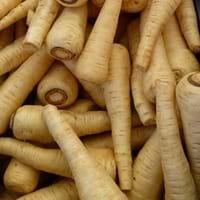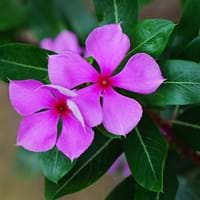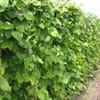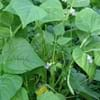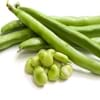Life Span
Biennial and Perennial
Perennial
Type
Vegetable
Tender Perennial
Origin
Europe, Western Asia
Madagascar
Types
Not Available
Purple vinca, Vinca, cherry red, strawberry color
Number of Varieties
Not Available
Habitat
waste ground, wastelands
Subtropical climates, Tropical regions
USDA Hardiness Zone
4-9
9-15
Sunset Zone
A1, A2, A3, H1, H2, 1a, 1b, 2a, 2b, 3a, 3b, 4, 5, 6, 7, 8, 9, 10, 11, 12, 13, 14, 15, 16, 17, 18, 19, 20, 21, 22, 23, 24
A1, A2, A3, H1, H2, 1a, 1b, 2a, 2b, 3a, 3b, 4, 5, 6, 7, 8, 9, 10, 11, 12, 13, 14, 15, 16, 17, 18, 19, 20, 21, 22, 23, 24
Habit
Rosette/Stemless
Clump-Forming
Flower Color
Yellow
Pink, Magenta, Rose
Flower Color Modifier
Bicolor
Bicolor
Fruit Color
Brown, Black
Not Available
Leaf Color in Spring
Green
Dark Green
Leaf Color in Summer
Green
Dark Green
Leaf Color in Fall
Green
Dark Green
Leaf Color in Winter
Not Available
Dark Green
Plant Season
Summer
Spring, Summer, Fall, Winter
Sunlight
Full Sun
Full Sun, Partial Sun
Type of Soil
Loam
Loam, Sand
The pH of Soil
Neutral
Neutral, Alkaline
Soil Drainage
Well drained
Well drained
Bloom Time
Summer
Indeterminate
Tolerances
Drought
Pollution, Drought, Salt
Where to Plant?
Ground, Pot
Container, Ground, Pot
How to Plant?
Seedlings
Seedlings, Stem Planting, Transplanting
Plant Maintenance
Medium
Medium
Watering Requirements
Average Water Needs, Do Not over Water, Keep the ground moist but not water-logged
Keep ground moist, Needs 2-3 times watering per week, Requires watering in the growing season, Water Deeply
In Summer
Lots of watering
Lots of watering
In Spring
Moderate
Moderate
In Winter
Average Water
Average Water
Soil pH
Neutral
Neutral, Alkaline
Soil Type
Loam
Loam, Sand
Soil Drainage Capacity
Well drained
Well drained
Sun Exposure
Full Sun
Full Sun, Partial Sun
Pruning
Remove damaged leaves, Remove dead branches, Remove dead leaves
Prune ocassionally
Fertilizers
All-Purpose Liquid Fertilizer
All-Purpose Liquid Fertilizer
Pests and Diseases
Aphids, Armyworm, Cutworms, Downy mildew, Pitch canker, Red blotch
Botrytis Blight, Canker, Crown rot, Pythium rot, Root rot
Plant Tolerance
Drought
Drought
Flower Petal Number
Not Available
Single
Fragrant Bark/Stem
Yes
No
Foliage Texture
Fine
Medium
Foliage Sheen
Matte
Glossy
Attracts
Butterflies
Butterflies
Allergy
Stomach burn
Intestinal gas, Nausea, Vomiting
Aesthetic Uses
Not Available
Beautification, Showy Purposes
Beauty Benefits
Blood purifying, Good for skin
Not Available
Environmental Uses
Air purification
Air purification
Medicinal Uses
Aphrodisiac
Chest pain, High blood pressure, Inflammation, Sore throat, Tooth ache, Wounds
Part of Plant Used
Root
Whole plant
Other Uses
Food for animals, Used as a nutritious food item
Decoration Purposes, Showy Purposes, Used as Ornamental plant
Used As Indoor Plant
Yes
Yes
Used As Outdoor Plant
Yes
Yes
Garden Design
Edible, Herb, Vegetable
Bedding Plant, Container, Hanging Basket, Mixed Border, Tropical
Botanical Name
PASTINACA sativa
CATHARANTHUS roseus
Common Name
Parsnip
Madagascar Periwinkle, Periwinkle, Vinca
In German
Pastinake
Vinca
In Spanish
Chirivía
Vinca
In Greek
Είδος δαυκίου
Vinca
In Portuguese
cherivia
Vinca
In Polish
Pasternak
Vinca
Phylum
Magnoliophyta
Magnoliophyta
Class
Magnoliopsida
Magnoliopsida
Order
Apiales
Gentianales
Family
Apiaceae
Apocynaceae
Genus
Abelia
Catharanthus
Clade
Angiosperms, Asterids, Eudicots
Angiosperms, Asterids, Eudicots
Tribe
Not Available
Not Available
Subfamily
Not Available
Not Available
Number of Species
Not Available
Not Available
Season and Care of Parsnip and Vinca
Season and care of Parsnip and Vinca is important to know. While considering everything about Parsnip and Vinca Care, growing season is an essential factor. Parsnip season is Summer and Vinca season is Summer. The type of soil for Parsnip is Loam and for Vinca is Loam, Sand while the PH of soil for Parsnip is Neutral and for Vinca is Neutral, Alkaline.
Parsnip and Vinca Physical Information
Parsnip and Vinca physical information is very important for comparison. Parsnip height is 15.20 cm and width 7.60 cm whereas Vinca height is 30.00 cm and width 60.00 cm. The color specification of Parsnip and Vinca are as follows:
Parsnip flower color: Yellow
Parsnip leaf color: Green
Vinca flower color: Pink, Magenta and Rose
- Vinca leaf color: Dark Green
Care of Parsnip and Vinca
Care of Parsnip and Vinca include pruning, fertilizers, watering etc. Parsnip pruning is done Remove damaged leaves, Remove dead branches and Remove dead leaves and Vinca pruning is done Prune ocassionally. In summer Parsnip needs Lots of watering and in winter, it needs Average Water. Whereas, in summer Vinca needs Lots of watering and in winter, it needs Average Water.
